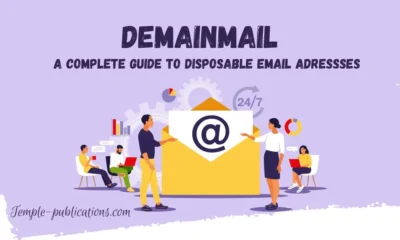HEALTH AND FITNESS
Find Your Match: Best Organic Lube for Every Preference

Embracing healthier lifestyle choices extends beyond diet and exercise. Many people are now opting for organic products in personal care, including lubricants. Organic lubricants provide benefits for both personal health and comfort, making them a popular choice.
Choosing the right lubricant can make a significant difference in your experience. Organic options are formulated to be gentle and effective without introducing harmful substances into your body. This article aims to guide you in finding the best organic lube tailored to your preferences.
Why Choose Organic Lubricants?
Organic lubricants stand out due to their natural ingredients and absence of harsh chemicals. Here’s why they might be the right choice for you:
- Natural Composition: These lubricants use organic ingredients that are less likely to cause irritation.
- Health Benefits: They typically avoid parabens and glycerin, reducing potential health risks.
- Environmental Impact: Choosing organic products supports eco-friendly practices and reduces your carbon footprint.
Opting for organic lubricants can enhance comfort and safety in your personal life. For a deeper understanding of the benefits of lube, check out Mayo Clinic’s article on how lube can aid in pregnancy.
By being aware of the ingredients and the benefits they provide, you can make an informed choice that’s not only good for your body but also mindful of the environment.
Best Organic Lube for Sensitive Skin
People with sensitive skin need to consider several features to ensure the lube is gentle and non-irritating.
Features to Look For:
- Hypoallergenic Properties: Look for lubes that are designed to minimize allergic reactions.
- Fragrance-Free: Avoid fragrances and dyes which can often cause irritation.
- Natural Ingredients: Ensure the lube is made with natural, non-toxic ingredients.
Recommended Products:
- Aloe Cadabra
- Description: Made from 95% organic aloe vera.
- Benefits: Soothing and moisturizing, ideal for sensitive skin.
- Sliquid Naturals H2O
- Description: A simple blend, free from harmful additives.
- Benefits: Water-based, providing long-lasting lubrication.
- Good Clean Love Almost Naked
- Description: Infused with organic vanilla and lemon.
- Benefits: Tested for sensitivity, assures gentle use.
For more information on handling skin sensitivity, consider visiting the American Academy of Dermatology.
Best Natural Personal Lube for Couples
For couples looking to enhance their intimate experiences, selecting the right personal lube is key. Natural personal lubricants provide a safe and enjoyable option, free from harsh chemicals.
Considerations for Couples:
- Water-Based Options: These are safe to use with condoms and sex toys, ensuring compatibility.
- Non-Staining: Easy cleanup is a must, especially for spontaneous encounters.
- Enhancing Ingredients: Look for lubes with added benefits, like warming or tingling effects.
Popular Brands and Types:
- K-Y Naturals
- Description: Plant-based ingredients that mimic natural body lubrication.
- Features: Hypoallergenic and gentle, perfect for couple use.
- Yes Water-Based Lubricant
- Description: Certified organic, providing silky smooth texture.
- Features: Non-sticky and safe with toys and condoms.
- Coconu Organic Lubricant
- Description: Coconut oil-based, offering a different texture.
- Features: Long-lasting, providing excellent moisture and comfort.
You can also check out this article on how to prevent genital irritation from affecting your sex life.
Selecting the right lube can make a significant difference in comfort and pleasure, and these options provide excellent choices for those seeking natural, organic solutions.
Benefits of Organic Water Based Lubricant
Organic water-based lubricants have become very popular, and for good reason. Here are some of the key benefits that make them a preferred choice:
- Easy Cleanup: One of the standout features of water-based lubes is their ease of cleaning. They wash off effortlessly with water, leaving no sticky residue behind.
- Compatibility: These lubricants are generally safe to use with a wide variety of toys and condoms, extending your options during intimate moments.
- Hydrating: They often include ingredients that help retain moisture in your sensitive areas, providing comfort and reducing the risk of irritation.
- Organic Certification: When choosing a lube, it’s important to look for organic certification to ensure the product is free from harmful chemicals and safe for your body.
- Skin-friendly: They are less likely to cause allergic reactions, making them an excellent choice for those with sensitive skin.
Some well-known products in this category include brands like Sliquid and Aloe Cadabra. Each offers unique formulations, so it’s worthwhile to compare and see which aligns best with your needs.
Choosing the Right Organic Personal Lube
Finding the best organic personal lube can seem overwhelming with so many choices available. Here’s a guide to help you make an informed decision:
- Identify Your Needs: Consider what you’re looking for in a lubricant. Do you prefer something with flavor, or do you need it to be scent-free? Are you looking for a lube that offers long-lasting performance?
- Reading Labels: Always check the product labels. Look for natural ingredients and ensure there’s an organic certification to avoid products with artificial chemicals.
- Understand Ingredients: Familiarize yourself with common ingredients in lubricants. Knowing which ingredients might cause irritation helps in selecting a product that’s comfortable for you.
- Consider Longevity: Some lubes are designed to last longer than others. If longer duration is important to you, seek out products noted for their endurance.
Remember, the best organic lube for you will align with your personal preferences and health considerations while providing comfort and enjoyment.
-

 BIOGRAPHY7 months ago
BIOGRAPHY7 months agoBehind the Scenes with Sandra Orlow: An Exclusive Interview
-

 HOME1 year ago
HOME1 year agoDiscovering Insights: A Deep Dive into the //vital-mag.net blog
-

 HOME1 year ago
HOME1 year agoSifangds in Action: Real-Life Applications and Success Stories
-

 BIOGRAPHY1 year ago
BIOGRAPHY1 year agoThe Woman Behind the Comedian: Meet Andrew Santino Wife




























